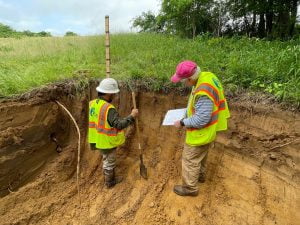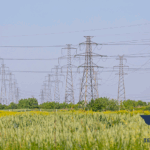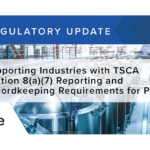
In today’s world, environmental protection is a top priority for individuals, communities, and businesses alike. With the increasing concerns about pollution and its potential impact on human health and the environment, it has become crucial to assess the environmental conditions of properties before any development takes place. One such assessment that plays a key role in this regard is the Phase 1 Environmental Site Assessment (ESA). In this article, we will take a closer look at the importance of a Phase 1 ESA, its objectives, the assessment process, components of a Phase 1 ESA report, limitations, legal implications, and the next steps after conducting such an assessment.
Understanding the Importance of Phase 1 Environmental Site Assessment
Environmental protection is not just a buzzword; it is an essential aspect of sustainable development. A Phase 1 ESA is a crucial step in preventing and addressing potential environmental risks associated with a property. It helps identify any existing or potential contamination, allowing stakeholders to make informed decisions about land development and investment opportunities.
Conducting a Phase 1 Environmental Site Assessment is not just about compliance; it is about ensuring the health and safety of communities and ecosystems. By thoroughly assessing the environmental history and current state of a property, professionals can determine the necessary steps to mitigate any risks effectively.
The Role of Phase 1 Assessment in Environmental Protection
A Phase 1 ESA serves as an effective tool for environmental protection by evaluating potential risks and hazards associated with a property. It focuses on identifying any previous or current uses of the land that may have caused contamination and investigates the potential impact of such contamination on the surrounding environment and community.
Moreover, the findings of a Phase 1 ESA can also help in planning future land use in a sustainable manner. Understanding the environmental quality of a site enables developers and investors to implement remediation strategies that not only protect the environment but also enhance the overall value and marketability of the property.
Key Objectives of a Phase 1 Environmental Site Assessment
There are several key objectives of a Phase 1 ESA, including:
- Evaluating the historical and current use of the property
- Identifying potential sources of contamination
- Assessing the potential risks posed by the contamination
- Providing recommendations for further investigation (if necessary)
Additionally, a Phase 1 ESA aims to establish a baseline of environmental conditions for a property, which can be crucial for future liability protection and risk management. By conducting this assessment, stakeholders can demonstrate their commitment to environmental stewardship and responsible business practices, fostering trust and credibility within the community and regulatory agencies.
The Process of Conducting a Phase 1 Environmental Site Assessment
The process of conducting a Phase 1 ESA involves several steps, starting with an initial site inspection and evaluation.
Initial Site Inspection and Evaluation
During the initial site inspection, environmental professionals assess the property for any visible signs of contamination or environmental concerns. This may include examining the soil, water sources, vegetation, and nearby infrastructure. The purpose of this inspection is to gather information about the site’s condition and identify any potential sources of contamination.
Historical Review of the Property
A historical review is an important part of the Phase 1 ESA process. It involves researching the property’s past uses, reviewing historical records, and conducting interviews with current and past property owners or occupants. This information helps identify potential sources of contamination and provides a better understanding of the site’s environmental history.
Assessment of Surrounding Properties
Assessing the surrounding properties is crucial in understanding the potential impact of contamination on the site under evaluation. This involves reviewing the land uses, potential sources of contamination, and any previous environmental assessments or remediation activities conducted in the vicinity. A comprehensive assessment of the surrounding properties helps in the accurate evaluation of potential risks and hazards.
Components of a Phase 1 Environmental Site Assessment Report
Executive Summary and Conclusions
The executive summary provides a concise overview of the Phase 1 ESA findings and conclusions. It highlights the main findings, potential risks if any, and recommendations for further action.
Description of the Site and Surroundings
This section provides a detailed description of the property under assessment, including its location, size, boundaries, and any notable features. It also includes information about the surrounding land uses, such as nearby industrial sites or sensitive ecological areas.
Findings and Recommendations
The findings section outlines the results of the Phase 1 ESA, including any identified environmental concerns or potential risks. It may also include recommendations for further investigation, such as conducting a Phase 2 ESA or implementing specific remediation measures.
Limitations and Legal Implications of Phase 1 Environmental Site Assessment
Understanding the Limitations of Phase 1 Assessment
While a Phase 1 ESA is a vital tool for evaluating environmental risks, it does have limitations. For example, it primarily relies on research, observations, and interviews and may not identify all potential sources of contamination. It is important to acknowledge these limitations and consider a Phase 2 ESA when necessary.
Legal Implications and Liability Issues
A Phase 1 ESA plays a significant role in managing environmental liability. Conducting a Phase 1 ESA is a recognized best practice and can help demonstrate due diligence in environmental compliance. However, it is crucial to understand that a Phase 1 ESA does not alleviate legal responsibility or provide absolute protection from liability. It serves as an essential tool for assessing potential risks and making informed decisions but does not guarantee complete risk elimination.
The Next Steps After a Phase 1 Environmental Site Assessment
When is a Phase 2 Environmental Site Assessment Required?
In some cases, a Phase 1 ESA may identify potential environmental concerns that require further investigation. In such instances, a Phase 2 ESA becomes necessary. A Phase 2 ESA involves more extensive sampling and analysis to confirm the presence and extent of contamination, providing a more comprehensive understanding of the site’s environmental condition.
Remediation Strategies for Identified Environmental Concerns
If a Phase 1 or Phase 2 ESA identifies environmental concerns, it is essential to develop appropriate remediation strategies. Each situation may require a unique approach based on the nature and extent of the contamination. Remediation options may include soil or groundwater treatment, containment measures, or even complete removal of contaminated materials.
In conclusion, a Phase 1 Environmental Site Assessment is a crucial step in protecting the environment and ensuring sustainable development. By identifying potential environmental risks and providing valuable information about a property’s history and surrounding area, a Phase 1 ESA helps stakeholders make informed decisions and take appropriate actions to mitigate environmental concerns. It is important to acknowledge the limitations of a Phase 1 ESA and consider further assessments or remediation strategies when necessary. By following a systematic approach and prioritizing environmental protection, we can create a better future for ourselves and the generations to come.
As you consider the importance of a Phase 1 Environmental Site Assessment for your Homestead project, remember that choosing the right environmental consulting firm is critical to responsibly moving your business forward. ESE Partners, with our extensive experience in environmental problem solving, stands ready to assist you. Our team of experts specializes in due diligence, remediation, compliance, and more, ensuring that your environmental concerns are addressed with innovative and sustainable strategies. With the USACE changing their review process for DA permit applications in the Galveston County District, now is the time to secure professional support. Don’t let regulatory changes slow you down. Request A Proposal from ESE Partners today and take the first step towards a successful and compliant project.








